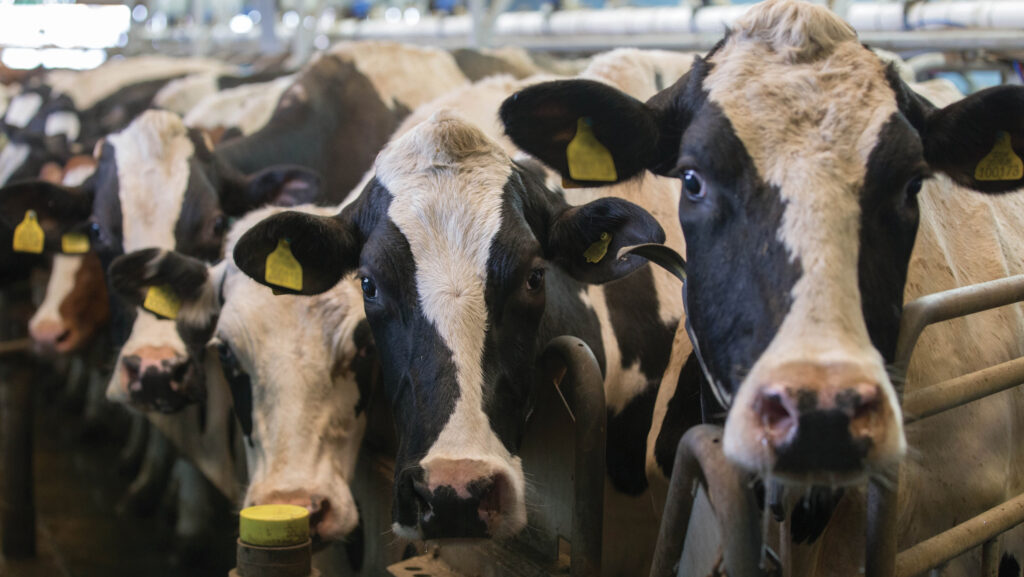Johne’s risk detection improved with new data analysis tool
 © Tim Scrivener
© Tim Scrivener Use of artificial intelligence and machine learning to better interpret a chronic and contagious bacterial infection could improve prevention and control strategies for dairy farmers.
Until now, the approach has been to “test and manage” Johne’s using a milk antibody test that identifies an antibody response, explained Prof Andrew Bradley of Quality Milk Management Services (QMMS).
See also: How a Somerset dairy cut mastitis cases by 40% in two years
Antibody test
The antibody test indicates the likelihood that cows are infected and likely to spread the infection to their calves.
It is classified by the J-system, whereby J0-1 cows are considered safe, while J5 cows are generally regarded as infectious.
Cows in the J2-J4 bracket are in an increasingly uncertain status, said Andrew, making control of the disease challenging, and has led to a new method of analysis being developed.
The Johne’s Pattern Analysis Tool – available through QMMS’s Remedy platform, is the outcome of a collaboration between QMMS and Nottingham University, supported by Innovate UK.
It uses existing test data and artificial intelligence to provide advanced insights into environmental transition risk and – unlike the current J classification system – predict which cows are likely to be at high risk of contracting Johne’s in the future.
“We’re not looking at a new test here, we’re looking at a new way of using that existing data,” said Andrew.
The combination of machine learning and artificial intelligence enables an approach called “unsupervised clustering”, he explained.
“This allows the computer to look in multi-dimensional space and at different characteristics of the test results, and group cows in different ways.”
Splitting herds into clusters
The new tool splits the herd into clusters: cows in clusters 1 and 2 are perceived as low risk, while those in clusters 3 and 4 are higher risk.
It can also calculate disease transition probabilities over an exact period, for example, whether a cow is likely to be low or high risk in 12 months’ time.
The cluster of greatest interest is cluster 3: cows in this group are at much higher risk of progressing to cluster 4 than those in cluster 1 and 2, according to QMMS.
Moreover, J0 and J1 cows in cluster 3 are 150-1,000 times more likely to progress to cluster 4 than J0 and J1 cows in cluster 1.
This means farmers can identify hidden high-risk cows more accurately than previously. By identifying cows that are likely to be low risk in 12 months’ time, better breeding decisions can be made, said Andrew.
Likewise, if a cow is flagged as being high risk at calving, breeding decisions can be tailored to minimise transition risk.
The basic Johne’s Pattern Analysis Tool report is freely available to milk-recorded herds through the cloud-based Remedy platform, which can be accessed via smartphone.
Farmers can also subscribe to an additional service, which will allow access to predictions at an individual cow level.
Farmers can sign up to the tool online at cloud.remedy.farm/dashboard/#/login
Prof Andrew Bradley was speaking at Dairy-Tech 2025.
